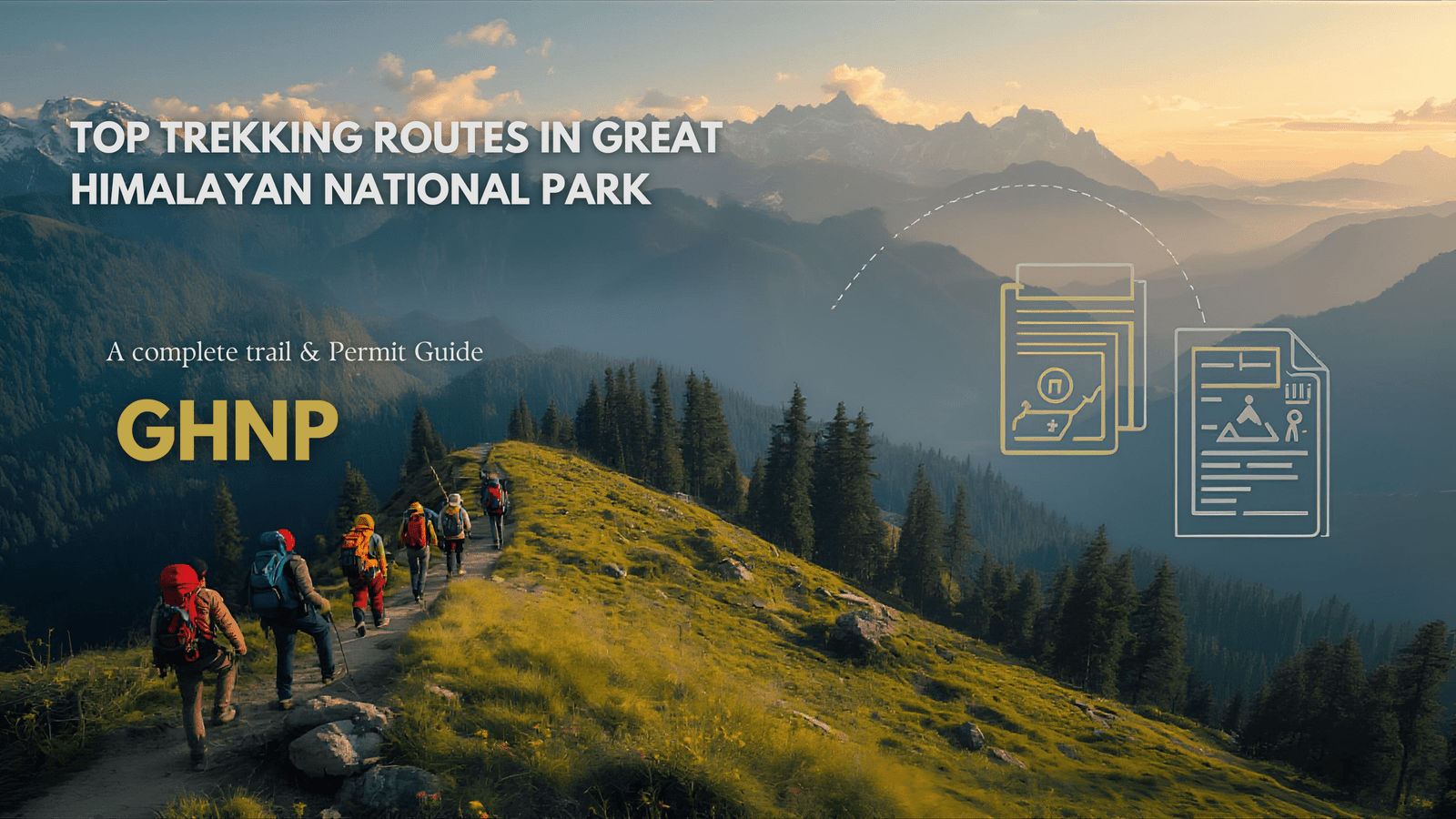Trekking in India is a thrilling experience that combines the raw beauty of nature with the adrenaline rush of scaling great heights. If you’re an adventure enthusiast, nature lover, or travel blogger, the high-altitude treks in India offer an unparalleled blend of excitement and serenity. But before you lace up your boots and set off on this grand adventure, preparation is key.
High-altitude trekking comes with its challenges, but with the right approach, it can be a deeply rewarding experience.
This blog post will guide you through essential tips and tricks to help you prepare for your next high-altitude trek in India. From understanding the physical requirements to packing the right gear, we’ve got you covered.
Understanding High-Altitude Trekking
What Is High-Altitude Trekking?
High-altitude trekking involves hiking at elevations typically above 8,000 feet (2,400 meters). At these heights, the air is thinner, and the body’s oxygen levels decrease, making it more challenging to perform physical activities. Understanding what you’re getting into is the first step toward a successful trek.
The Appeal of High-Altitude Treks in India
India is home to some of the world’s most breathtaking high-altitude treks. From the rugged terrain of Ladakh to the lush valleys of Himachal Pradesh, these treks offer spectacular views and unique cultural experiences. Whether it’s the iconic Chadar Trek or the serene Valley of Flowers, each trek has its charm and challenges.
Recognizing the Challenges
Trekking at high altitudes is not just a physical challenge but also a mental one. The reduced oxygen levels can lead to altitude sickness, fatigue, and other health issues. Being well-prepared can help mitigate these risks and ensure a safe and enjoyable trek.
Physical Preparation –
Building Stamina
Stamina is crucial for high-altitude trekking. Begin your training at least two to three months before your trek. Focus on cardiovascular exercises like running, cycling, and swimming to build endurance. Aim for at least 30 minutes of cardio workouts five times a week.
Strength Training
Incorporate strength training into your routine to build muscle strength, particularly in your legs and core. Squats, lunges, and planks are excellent exercises to prepare your body for the rigors of trekking.
Flexibility and Balance
Yoga and stretching exercises can improve your flexibility and balance, reducing the risk of injuries. Practicing yoga can also help with breathing techniques, which are essential at high altitudes.
Acclimatization
The Importance of Acclimatization
Acclimatization is the process of allowing your body to adjust to the lower oxygen levels at higher altitudes. It is crucial to prevent altitude sickness, which can range from mild symptoms like headaches to severe conditions like pulmonary edema.
Gradual Ascent
One of the best ways to acclimatize is to ascend gradually. Follow the golden rule of trekking—”Climb high, sleep low.” Gain altitude slowly and spend extra days at certain elevations to allow your body to adapt.
Hydration and Nutrition
Staying hydrated is vital at high altitudes. Drink plenty of water and avoid alcohol and caffeine, as they can dehydrate you. Eating a balanced diet rich in carbohydrates can provide the energy needed for trekking.
Packing Essentials
Clothing
Layering is key to staying comfortable during high-altitude treks. Pack moisture-wicking base layers, insulating mid-layers, and waterproof outer layers. Don’t forget a good quality down jacket for the cold nights.
Footwear
Invest in a sturdy pair of trekking boots with good ankle support and a solid grip. Break them in before your trek to avoid blisters. Also, pack multiple pairs of moisture-wicking socks.
Gear and Equipment
Essential gear includes a reliable backpack, trekking poles, a headlamp, and a good quality sleeping bag. Depending on your trek, you might also need crampons or gaiters. Always carry a first-aid kit and a multi-tool.
Health Precautions
Understanding Altitude Sickness
Altitude sickness can affect anyone, regardless of fitness levels. Symptoms include headaches, nausea, dizziness, and fatigue. Knowing the signs and taking preventive measures can help you stay safe.
Preventive Measures
Medications like Diamox can help prevent altitude sickness. Consult your doctor before taking any medication. Also, practice deep breathing exercises and take regular breaks to rest.
Emergency Protocols
Always have a plan for emergencies. Know the nearest medical facilities and keep emergency contact numbers handy. If you experience severe symptoms of altitude sickness, descend immediately and seek medical help.
Mental Preparation
Staying Motivated
Trekking at high altitudes can be mentally exhausting. Stay motivated by setting small goals, celebrating your progress, and reminding yourself of the beautiful views awaiting you.
Coping with Isolation
High-altitude treks often mean limited connectivity and long stretches of solitude. Prepare yourself mentally for this by practicing mindfulness and enjoying the disconnect from daily life.
Group Dynamics
If you’re trekking in a group, communication is key. Support each other, share responsibilities, and ensure everyone’s well-being. A positive group dynamic can make the trek more enjoyable.
Trekking Permits and Regulations
Understanding the Requirements
Different regions in India have different requirements for trekking permits. Research the specific regulations for your chosen trek and ensure you have all the necessary permits and documents.
Environmental Responsibility
Respect the local environment and communities. Follow the principles of Leave No Trace, and avoid disturbing wildlife or damaging vegetation. Carry reusable bottles and bags to minimize waste.
Cultural Sensitivity
Many high-altitude treks in India pass through remote villages and sacred sites. Show respect for local customs and traditions. Seek permission before taking photographs of people and places.
Choosing the Right Trek
Assessing Your Fitness Level
Choose a trek that matches your fitness level and experience. Beginners might start with easier treks like Triund or Dayara Bugyal, while seasoned trekkers can opt for challenging routes like Stok Kangri or Pin Parvati Pass.
Seasonal Considerations
The best time for high-altitude trekking in India varies by region. Research the weather conditions and choose a season that offers the best trekking experience. Summer and early autumn are generally ideal.
Guided vs. Independent Trekking
Decide whether you want to trek independently or with a guided group. Guided treks offer the advantage of local expertise and support, while independent trekking gives you the freedom to set your own pace.
Tasting the Local Cuisine – Fueling Your Trek
Local cuisine can provide the necessary energy for trekking. Enjoy traditional dishes like dal bhat, momos, and thukpa, which are not only delicious but also packed with nutrients.
Hydration Tips
Drinking boiled or filtered water is crucial. In remote areas, consider carrying water purification tablets. Avoid drinking untreated water from streams or lakes.
Snack Smart
Pack energy-dense snacks like nuts, dried fruits, and energy bars for quick boosts during the trek. Local markets often offer unique snacks that are worth trying.
Capturing the Experience:
Photography Tips
High-altitude landscapes offer stunning photo opportunities. Bring a good quality camera and keep it protected from the elements. Capture the beauty of the mountains, the flora and fauna, and the cultural moments.
Journaling
Document your experiences in a journal. Note down your thoughts, feelings, and observations. This can be a therapeutic way to reflect on your trek and create lasting memories.
Sharing Your Story
Share your trekking experience with the world. Whether through a blog, social media, or a travel magazine, your story can inspire others to take on their own high-altitude adventures.
Engaging with the Trekking Community
Online Forums and Groups
Join online forums and social media groups dedicated to trekking in India. These platforms offer valuable advice, trip reports, and a sense of community.
Local Clubs and Organizations
Many cities have trekking clubs and organizations that arrange regular trips. Joining a local club can provide you with training opportunities and connect you with like-minded adventurers.
Attending Trekking Events
Participate in trekking events, workshops, and film festivals. These events offer a chance to learn from experts, share your experiences, and stay updated on the latest trends in trekking.
Conclusion
High-altitude trekking in India is a thrilling adventure that offers breathtaking views, cultural insights, and a profound sense of achievement. By preparing adequately and understanding the challenges, you can ensure a safe and enjoyable trek. Remember, the key to a successful trek lies in the balance of physical readiness, mental resilience, and a deep respect for the environment and local cultures.
Ready to start your high-altitude trekking adventure? Begin your preparations today and discover the majestic beauty of India’s mountains. For personalized advice and guided trekking experiences, connect with our community of experts and fellow trekkers.
Happy trekking!
Post Views: 1,031






